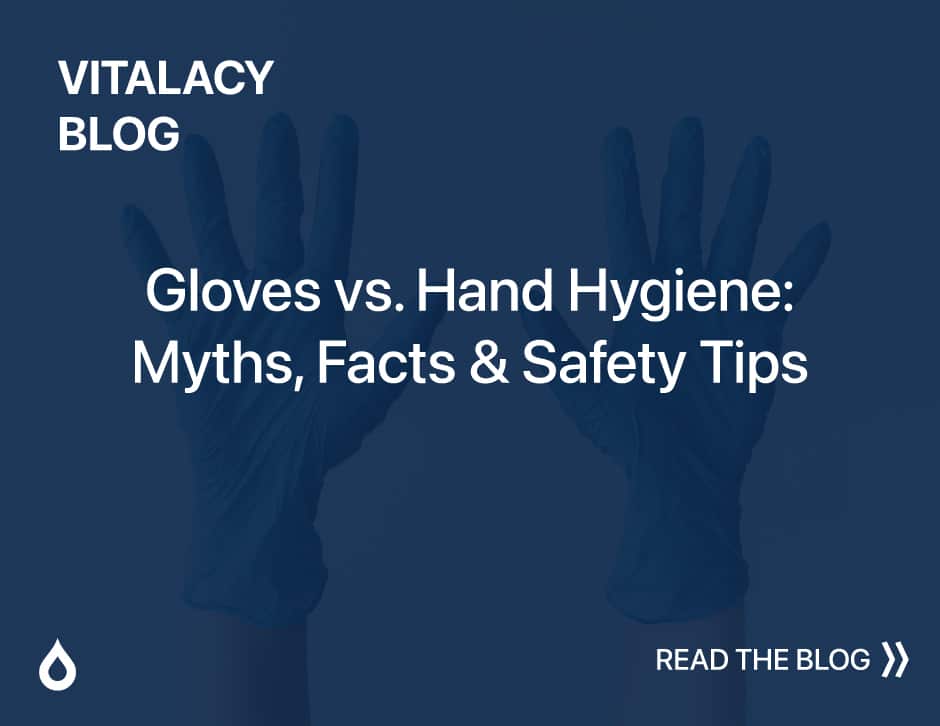
In short, evidence suggests “Yes.” Collectively, human actions are making bacteria more resistant to antibiotics, mainly due to inadequate awareness of the issues and a reluctance to address the problem directly.
So, the next question should be “What can we do to change this?” The first step is to frame the issue with a better understanding of the threats posed by health-associated infections (HAIs).
The Growing Threat of HAIs
The Center for Disease Control and Prevention estimates that “On any given day, about one in 25 hospital patients has at least one healthcare-associated infection.” Our own research indicates that HAIs in a 250 bed hospital typically add between $5 – $6 million of excess medical costs annually. Just think for a moment about how many patients there are in hospitals today all over the United States to gain some perspective on the scope of this problem.
HAIs could be any kind of infection that results from exposure to pathogens in the pursuit of medical attention. That includes, but is not limited to, locations such as hospitals, emergency clinics, outpatient surgery centers, home healthcare, nursing homes, rehabilitation facilities and waiting rooms.
The most common infections associated with healthcare can be divided into four categories: catheter-associated urinary tract infections, bloodstream infections, surgical site infections and pneumonia.
Four Infection Pathways
According to the Association for Professionals in Infection Control and Epidemiology, there are four pathways that lead to the most common HAIs:
Catheter-associated urinary tract infections: Infection develops either during or after placement of a urinary catheter. Urinary catheters are normally placed in patients undergoing long surgical procedures who need assistance with passing urine, or those who are extremely ill. Bacteria enter the tubing and make their way into the bladder or kidneys.
Central line-associated bloodstream infections: Infection develops either during or after placement of a tube placed into a vein. You may know this as an IV. IVs are normally placed to give fluids and medication or may be used to withdraw blood for testing. Bacteria enter the tubing and circulate in the blood.
Surgical site infections: Infection develops either during or after a surgical procedure when bacteria enter the wound. Sometimes, these bacteria may also move to other sites and cause infection in the urine, blood or lungs.
Pneumonia: Infection develops when bacteria enter the nose or mouth and travel to the lungs. Bacteria may also travel through a tube that has been inserted to help with breathing.
The most important steps that you can take to protect yourself and others against HAIs include:
- Remember to properly sanitize your hands and ask the same of everyone who provides healthcare for you.
- Stay informed on the latest technology and solutions related to hygiene.
- Take medications, especially antibiotics, as directed to avoid the spread of highly-resistant super-germs.
As antibiotics have grown more prevalent in the treatment of common ailments, natural selection has favored the survival of bacteria and other germs that are not affected by any known antigens.
Hospitals as Breeding Grounds for Super Germs
Many stories in the media have discussed the spread of bacteria that can no longer be treated with antibiotics. A related story that few sources have covered is how hospitals and other healthcare facilities have served as the source for many of these evolved pathogens.
An investigative report from the L.A. Times found that, “Even when the sinks, faucets, bedrails and countertops of patients’ rooms are largely free of germs that resist modern medicines, the genetic building blocks for antibiotic resistance intermingle freely in the pipes connected to those rooms, according to a study published in the journal mBio. That DNA can give superbugs the power to defeat modern medicines and threaten the lives of patients.”
Antibacterial Resistance and Hand Sanitizers
The time it takes for bacteria to evolve a resistance to a new antibiotic is also shrinking, with accelerated mutations timelines over the past few years. The CDC now estimates that, in U.S. hospitals, over two million patients are infected each year with a bacterium that’s become resistant to one or more antibiotic medications. For at least 23,000 of these patients, the infection ends up fatal.
Widespread concern for infection – without adequate knowledge of proper hygiene techniques – may be contributing to this crisis. A new study just published in Science measured the proliferation of alcohol-sanitizer-resistant enterococcus. Dr. Sacha Pidot concluded, “[T]he development of alcohol-tolerant strains of E. faecium has the potential to undermine the effectiveness of alcohol-based disinfectant standard precautions.”
In addition, new research indicates that alcohol-based hand sanitizers may not be as effective as has been widely advertised. Beyond that, some ingredients in hand sanitizers may be toxic as they accumulate, resulting in short and long-term side effects for public health.
Recently, the Food and Drug Administration announced that its “current effort is designed to ensure that the safety and effectiveness evaluations and determinations for active ingredients used in antiseptics are consistent, up-to-date, and appropriately reflect current scientific knowledge and increasing use patterns.”
Fighting Bacteria with Hand-washing Reminders
In the bigger picture, healthcare providers and research scientists have worked together to solve health crises in the past, and many avenues of research are just in their infancy. Technology, science and analytics hold out a great deal of hope in finding ways to not only save the lives of more patients, but also prevent them from becoming infected in the first place.
In fact, technology, science and analytics combined offer an answer to the question that sparked this whole discussion. To change the public’s ingrained behaviors and stop making bacteria more resistant, Vitalacy has put together a solution involving the Internet of Things (IoT), wearable technology, and machine learning.
Vitalacy empowers hospitals with data and guidance to reach their goals and minimize HAIs by accurately measuring and reporting on the state of hand hygiene compliance to provide effective and sustainable operational insight.
Let’s talk about how we can help your healthcare facility meet your hand hygiene goals this year. Contact us at (310) 745-5050 or info@vitalacy.com.
Sasha Viasasha writes on the science of healthcare. Her current works are centered around patient-centered IoT development, machine learning and analyzing data from wearable medical devices.
Request a demo of Vitalacy’s Automated Hand Hygiene Monitoring Solution today!
References
CDC, https://www.cdc.gov/hai/surveillance/index.html
APIC, https://apic.org/For-Consumers/Monthly-alerts-for-consumers/Article?id=what-is-an-hai
L.A. Times, http://www.latimes.com/science/sciencenow/la-sci-sn-hospital-pipes-superbugs-20180206-story.html
American Society for Microbiology, http://mbio.asm.org/content/9/1/e02011-17.abstract?sid=7914d1bf-ce3a-414c-979b-79f22fefdf37
FDA, https://www.fda.gov/Drugs/DrugSafety/InformationbyDrugClass/ucm444681.htm
Author
-

Vitalacy is committed to reducing patient harm in healthcare through better hand hygiene and patient safety solutions. Bluetooth-enabled smart sensors and wearables help improve outcomes and Leapfrog Hospital Safety Grades.
View all posts




